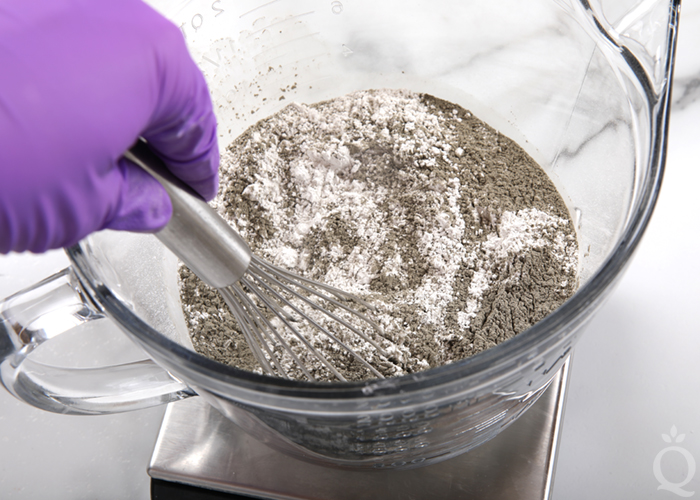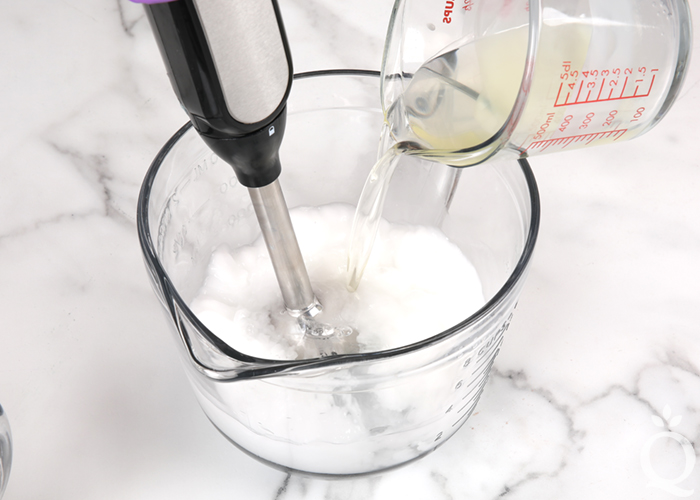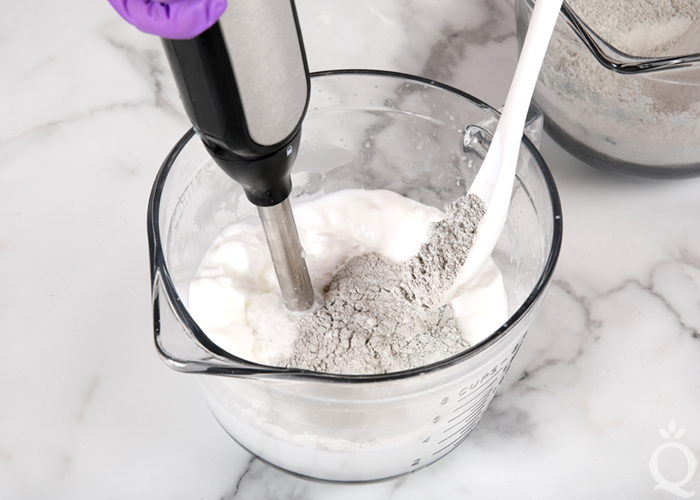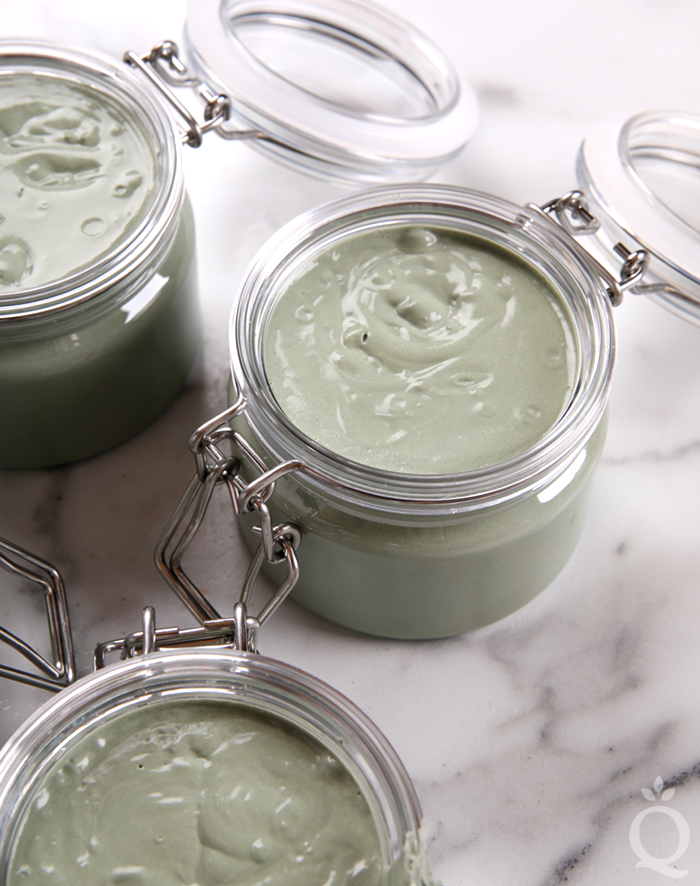Do you ever find yourself playing detective, carefully scanning product labels before making a purchase? It can be a bit overwhelming, especially when so many body care products—supposedly natural or organic—are packed with questionable ingredients! That’s one of the reasons I love making my own. I get to control exactly what goes into my products, and it’s such a fun process! Come along with me as I share how to make your own luxurious shea butter lotion.

Non greasy shea butter lotion recipe
In my journey of healing, I became increasingly aware of the massive toxic burden in our modern world, and a big part of that is the products we use on our skin. Did you know that our skin, the largest organ in our body, quickly absorbs whatever we put on it? It’s a sobering thought, especially when we consider just how many commercial personal care products are packed with harmful chemicals.
This lotion is the perfect solution for when you want a light, non-greasy moisturizer made with only the purest, most natural ingredients. I’m excited to share with you how to make lotion with shea butter—I think you’ll love it!
Taking it into my own hands with DIY lotion
In my quest for the purest, most natural skincare, I decided to try making some products myself. After all, creating things has always been a huge passion of mine.
What I quickly discovered is that making your own organic skincare is not only fun but incredibly rewarding! One of my favorite things to make is lotion. While I love DIY skincare, makeup is one area I don’t usually tackle—check out my review of 100% Pure makeup here for more on that.
I just find it so satisfying to blend ingredients that don’t naturally mix and turn them into a smooth, light, and luxurious lotion. It’s like a little magic every time!
How do you make your own lotion?
When you make lotion, you’re creating an emulsion—essentially forcing two ingredients that don’t naturally mix to combine. It’s similar to the process of making homemade mayonnaise!
My favorite tool for making lotion is a food processor. While a blender works too, I find that the food processor gives the most consistent results.
Cleanliness is crucial when making skincare products, especially when they contain water. I suggest cleaning all your equipment with a weak bleach solution and allowing it to air dry before starting. This helps prevent introducing any bacteria into your recipe.
For the water component, I highly recommend using distilled water. This ensures that the lotion remains as pure as possible, free from any unwanted contaminants that could affect the final product.

How to make lotion with shea butter directions
INGREDIENTS:
- 3/4 cup jojoba oil
- 5 TBSP shea butter
- 2 TBSP beeswax
- 1 cup distilled water
- 1/2 tsp preservative
- 96 drops essential oil (optional)
INSTRUCTIONS:
- Measure the jojoba oil, shea butter, and beeswax into a heat-safe glass container, such as a pitcher.
- Create a double boiler by placing the pitcher on a cloth in a pan of water.
- Heat the water to a gentle simmer until the shea butter and beeswax are completely melted.
- Pour the hot oil mixture into a food processor.
- Turn the food processor on, and in a small, slow stream, gradually pour the distilled water into the food processor.
- Allow the food processor to run for another minute or so, letting the emulsion form.
- Ensure the lotion mixture stays below 176°F (80°C).
- Add the preservative and essential oils, if using, and let the food processor run for another minute.
- Pour the lotion into glass containers.
- Store in a cool, dark place at room temperature.
Enjoy your homemade, luxurious lotion!

Natural preservative for homemade lotion
When making homemade lotions that contain water, it’s crucial to use a preservative.
Hold up, though—don’t we usually try to avoid preservatives in our food?
I had the same hesitation at first. But here’s the thing: when we make something with water and store it at room temperature, we really do need to add something to keep it fresh and prevent the growth of unwanted bacteria or mold.
I’ve found a natural preservative that works great, and it’s one I feel comfortable using—Optiphen Plus. It’s paraben-free and formaldehyde-free, which is exactly why I love it. That’s the preservative I recommend when making lotion with shea butter.
If you prefer to go preservative-free, you can store your homemade lotion in the refrigerator. Just keep in mind, the shelf life will be shorter.
Now that we’ve covered the essentials, let’s get started on making some beautiful lotion!
Customize your DIY lotion
What’s even more fun is when you get to experiment and play around with ingredients. That’s when things get really exciting!
In this recipe for making lotion with shea butter, I’ve used jojoba oil as the liquid oil and shea butter. But here’s the best part—you can totally swap these out for other oils and butters that suit your preferences! You could try sweet almond oil and cocoa butter, or even avocado oil and coconut oil. The possibilities are endless, and each combination will give your lotion a unique feel and scent!
Make it smell pretty and do even more
Essential oils are such a fun addition to homemade lotions! You can use a single oil, a pre-mixed blend, or even create your own custom blend.
Some essential oils are fantastic for their anti-aging properties, making them perfect for homemade lotions. For example, lavender oil is packed with beneficial ingredients for the skin and has a beautiful scent.
A couple of my favorite pre-mixed blends from Plant Therapy are Soft Skin and Bouquet. Soft Skin is filled with oils that help to soften and renew the skin, offering lovely anti-aging benefits. Bouquet has a gorgeous, floral scent that’s perfect for a soothing lotion. There are so many other beautiful blends to choose from as well.
And of course, you can get creative and mix your own! If you’re looking for natural gift ideas, I’ve shared some essential oil gift ideas here.
If you’re dealing with skin rashes or itchy skin, I’ve got a post with info on which essential oils can help with that too!

Is commercial natural skincare the real deal?
I’ve come to realize just how much our personal care and skincare products truly matter. To reduce our personal toxic load, it’s much better to use pure, natural ingredients and avoid synthetic and artificial substances.
There are plenty of skincare and personal care products on the market that are labeled as “natural” or even “organic,” but are they really the best choice?
Sadly, the answer is often no. Many so-called natural skincare products still contain ingredients that aren’t actually natural, and ones I’d rather avoid.
If you’re looking for some of my favorite non-toxic cleaning products, check out this post here. I also have a great tallow lotion recipe for you here!
Benefits of shea butter
Shea butter is an incredible plant-based ingredient that’s both moisturizing and soothing for the skin. It’s rich in fatty acids, as well as vitamins A and E, and has natural anti-inflammatory properties, making it a great choice for revitalizing and nourishing your skin (source).
When choosing between unrefined and refined shea butter, I recommend going with unrefined if you can. It retains more of its beneficial nutrients compared to the refined version. The only downside is that it has a stronger smell, but in my opinion, the extra benefits make it worth it!
CONCLUSION
In conclusion, making your own skincare products, like homemade lotion with shea butter, is not only a fun and rewarding experience but also an empowering way to ensure you’re using the purest, most natural ingredients. By choosing wholesome oils, butters, and essential oils, you can create a personalized lotion that nourishes your skin and keeps it free from harmful chemicals.
Whether you’re experimenting with different oils, blending your own essential oils, or using natural preservatives like Optiphen Plus, the process allows you to have full control over what goes onto your skin. Plus, it’s a great way to reduce your toxic load and embrace a cleaner, more natural skincare routine.
So, get creative and enjoy the process! With a little knowledge and the right ingredients, you can make your own luxurious, non-toxic lotion that’s perfect for your skin.
















